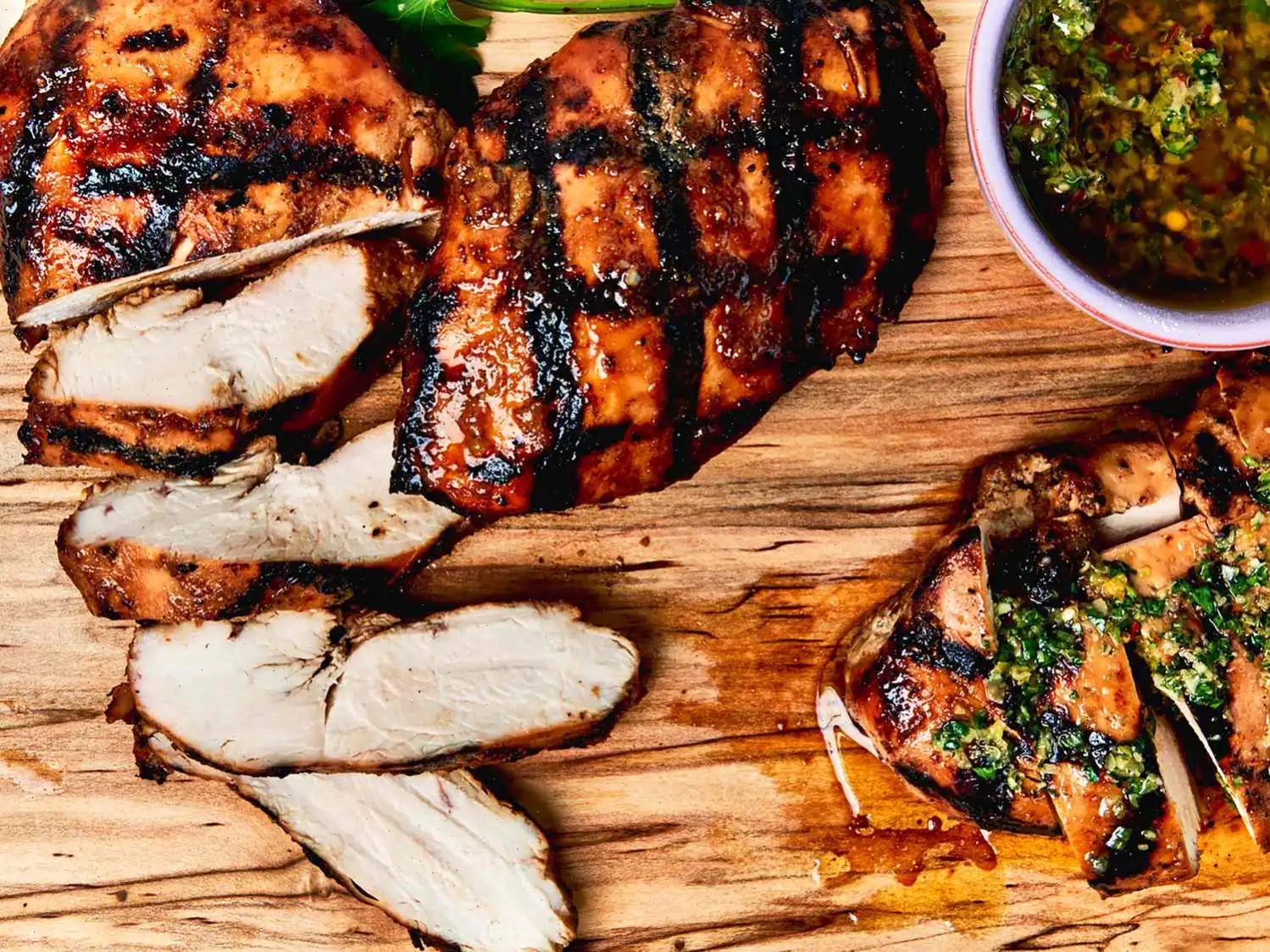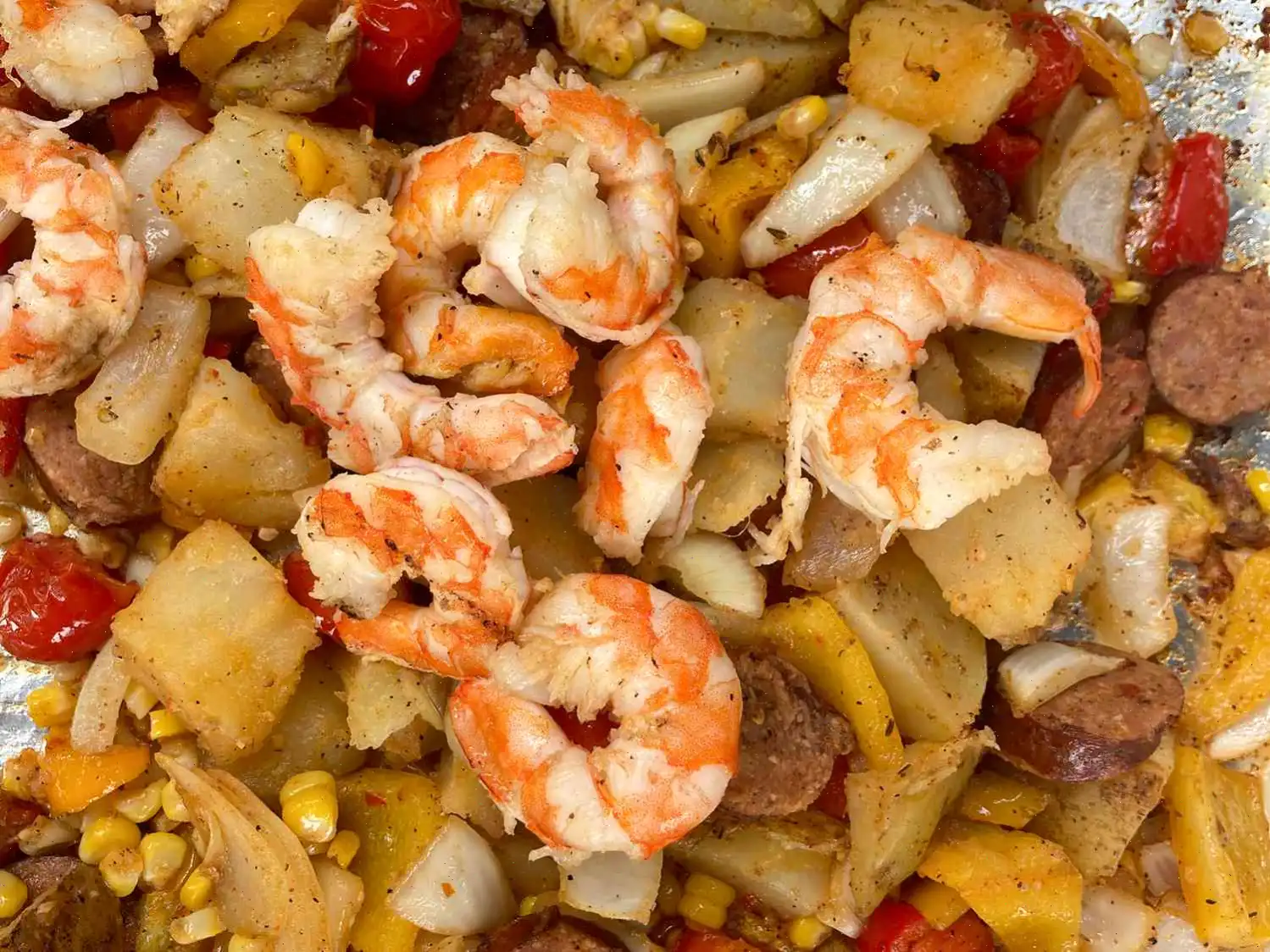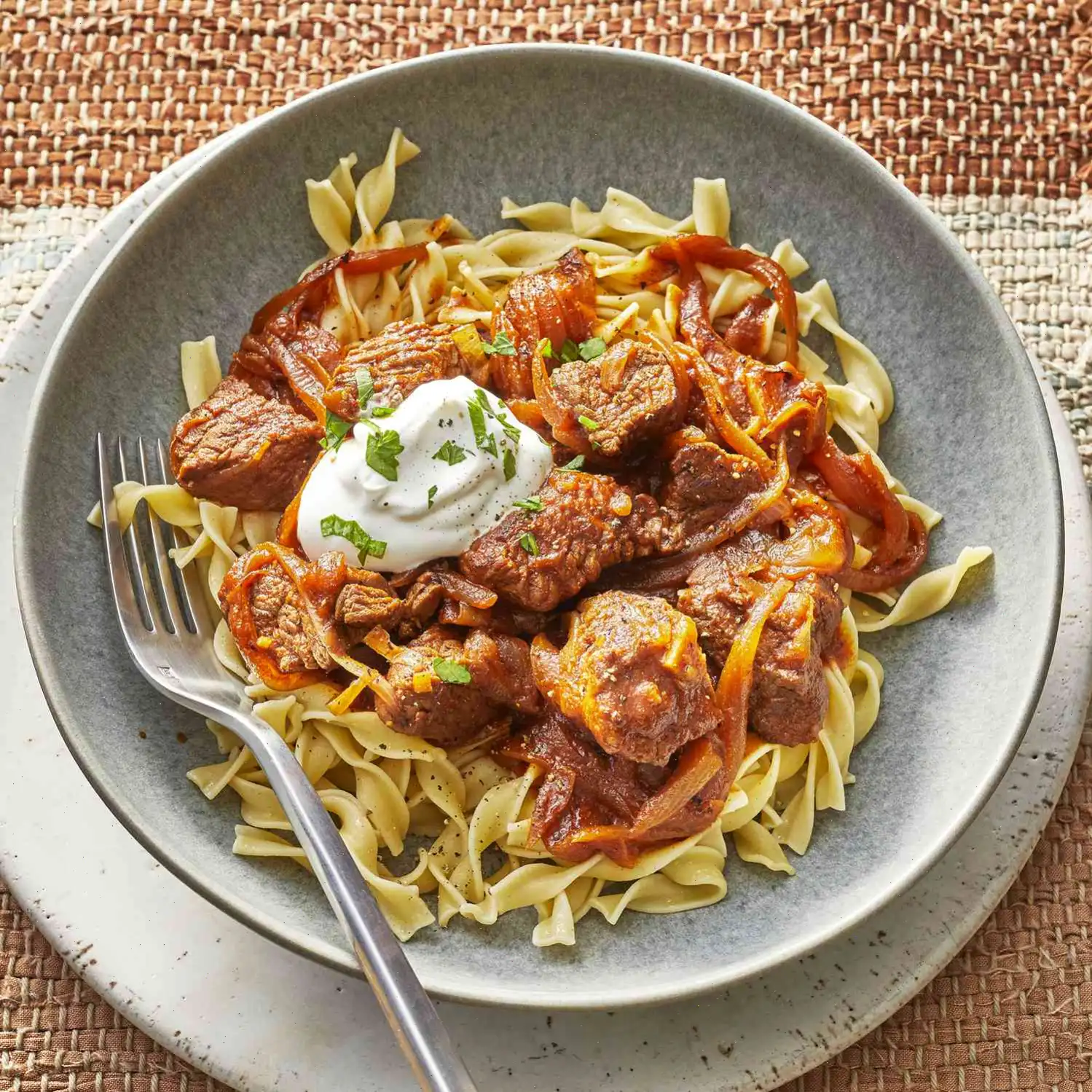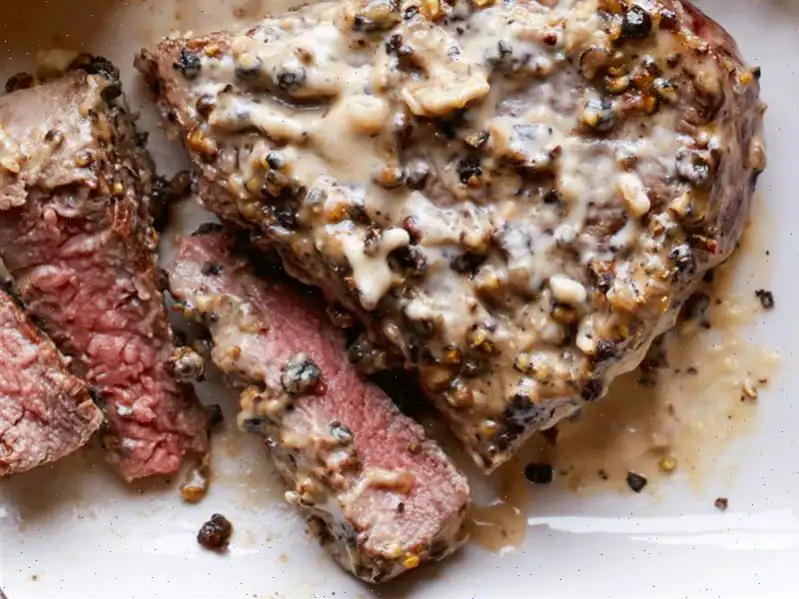
Beef Teriyaki Noodles Recipe
Ingredients
- 1 (8 ounce) package vermicelli noodles
- 2 tablespoons vegetable oil, divided
- 2 medium zucchini, diced
- 1 medium yellow onion, thinly sliced
- 1 large bell pepper, diced
- Salt and freshly ground black pepper to taste
- 1 tablespoon minced garlic
- 1 pound boneless rib-eye steak, fat trimmed, cut crosswise into thin strips
- cup soy sauce
- cup water
- cup light brown sugar
- 2 tablespoons white vinegar
- 1 tablespoon cornstarch
- teaspoon ground ginger
Directions
- Fill a large pot with lightly salted water and bring it to a rolling boil. Stir in the noodles and return to a boil. Cook the noodles uncovered, stirring occasionally, until the pasta is tender yet firm to the bite, about 4 to 5 minutes. Drain and keep warm.
- While the noodles are cooking, heat 1 tablespoon of vegetable oil in a large nonstick skillet over medium-high heat. Add the zucchini, onion, and bell pepper. Season lightly with salt and pepper. Cook, stirring occasionally, until the vegetables are lightly caramelized and tender, about 8 minutes. Add the minced garlic and cook for about 1 minute, until fragrant. Transfer the vegetables into a bowl and set them aside.
- In the same skillet, heat the remaining tablespoon of oil until hot. Add the steak strips and sear them until they are nicely browned on each side and cooked to medium. Season the steak lightly with salt and pepper while it cooks.
- To make the teriyaki sauce, combine the soy sauce, water, brown sugar, vinegar, cornstarch, and ginger in a bowl. Whisk until the sauce is well blended.
- Once the steak is cooked, add the vegetables back into the skillet and pour the teriyaki sauce over everything. Bring the mixture to a simmer and cook until the sauce thickens, about 2 minutes.
- Add the cooked noodles to the skillet and gently stir to evenly coat them with the sauce. Taste and adjust the seasonings as needed.
Cook's Note
Feel free to use any cut of steak you prefer. You can also swap the vegetables based on what you have on hand or what you like best!
Nutrition Facts (per serving)
- Calories: 565
- Total Fat: 30g (38% Daily Value)
- Saturated Fat: 10g (52% Daily Value)
- Cholesterol: 88mg (29% Daily Value)
- Sodium: 1900mg (83% Daily Value)
- Total Carbohydrate: 40g (15% Daily Value)
- Dietary Fiber: 3g (11% Daily Value)
- Total Sugars: 15g
- Protein: 36g (72% Daily Value)
- Vitamin C: 56mg (62% Daily Value)
- Calcium: 71mg (5% Daily Value)
- Iron: 5mg (26% Daily Value)
- Potassium: 870mg (19% Daily Value)
* Percent Daily Values are based on a 2,000 calorie diet. Your daily values may be higher or lower depending on your calorie needs.
** Nutrient information is not available for all ingredients. Amount is based on available nutrient data.
If you are following a medically restrictive diet, please consult your doctor or registered dietitian before preparing this recipe for personal consumption.
History of Origin
Beef Teriyaki Noodles blend the centuries-old Japanese art of teriyaki with the global love for hearty noodle dishes. The word teriyaki dates back to the Edo period, describing a cooking technique where food is glazed with a glossy mixture of soy sauce and sweeteners. As Japanese cuisine traveled worldwide, home cooks began pairing this aromatic sauce with beef and wheat-based noodles, creating a fusion dish that honors tradition while embracing modern tastes.
Regional Characteristics
While Japan traditionally uses fish or chicken for teriyaki, Western adaptations often highlight beef due to its rich flavor and availability. In the United States, the dish typically includes vibrant vegetables like bell peppers and zucchini, reflecting local produce. Some regions in Southeast Asia add chili or sesame oil for extra heat and nuttiness, resulting in a more intense, aromatic version of the classic glaze.
How It Differs from Similar Dishes
Unlike classic yakisoba, which relies on a tangy, Worcestershire-style sauce, Beef Teriyaki Noodles gain their signature flavor from a sweetsavory glaze thickened with cornstarch. Compared to stir-fried lo mein, this dish focuses more on caramelization and the glossy coating that clings tightly to the ingredients. The balance of sugar, vinegar, and soy sauce gives it a profile that is both comforting and distinctly Japanese-inspired.
Where It Is Commonly Served
Beef Teriyaki Noodles appear frequently on menus of Asian-fusion restaurants, casual noodle bars, and food courts where quick, flavorful meals are popular. They are also a go-to dish for home cooks who want a 30-minute dinner that tastes restaurant-quality. In many countries, it is offered as part of lunch specials, takeout bowls, or customizable build-your-own noodle plates.
Interesting Facts
Teriyaki sauce became globally recognized in the mid-20th century, especially after Japanese immigrants introduced the technique to Hawaii, where pineapple juice was sometimes added for sweetness. Today, teriyaki is one of the most widely adapted Asian flavors in the world. Another fun fact: the glossy finish of the sauce isnt accidentalits shine was historically considered a mark of skill, showing perfect control over heat and reduction.
You can listen to this recipe in AI audio format. Simply click the play button below to listen to the content in a format that suits you best. It’s a great way to absorb information on the go!
FAQ about Beef Teriyaki Noodles Recipe
Comments
FaithE
02/20/2025 02:20:22 AM
I used egg noodles and it was perfect!
Joseph Allen
07/30/2024 01:32:41 AM
Even my roommate approved.







